- INTRODUCTION
- LECTURES
- Miles Glendinning / The Hundred Years War: a ‘Long Century’ of Mass-Housing Campaigns Across the World
- Auguste Van Oppen and Marc Van Asseldonk / Open-Source Urbanism
- Tim Rienets / Less Is More? Urban Design and the Challenge of Shrinking Cities
- Adam Bobbette and Etienne Turpin / Aberrant Architecture: Typologies of Practice
- Matthias Rick / Fleeting Architecture ‒ Raumlabor’s Instant Urbanism
- ESSAYS
- Nerijus Milerius / Breaking Point: from Soviet to Post-Soviet City
- Benjamin Cope / A Reflection on Breaking Points in the Case of The Praga District of Warsaw
- Miodrag Kuč / Berlin. Becoming Normal?
- Mindaugas Pakalnis / Vilnius. The Challenge of Disintegration
- Siarhei Liubimau / Popular Urbanism and the Issue of Egalitarianism
- INTERVIEWS
- No Trust – No City / Matthias Rick Interviewed by Ona Lozuraitytė and Aistė Galaunytė
- The Man, Who Turned the Barbeque into the Center of the World / Benjamin Foerster-Baldenius
- Radicalising the Local / Jeanne Van Heeswijk Interviewed by Kotryna Valiukevičiūtė
- Learning-By-Doing / Laura Panait Interviewed by Arnoldas Stramskas
- Preserving the Generic / Kuba Snopek interviewed by Marija Drėmaitė
- A Permanent Anticipation of Uncertainty / Adam Bobbette interviewed by Arnoldas Stramskas
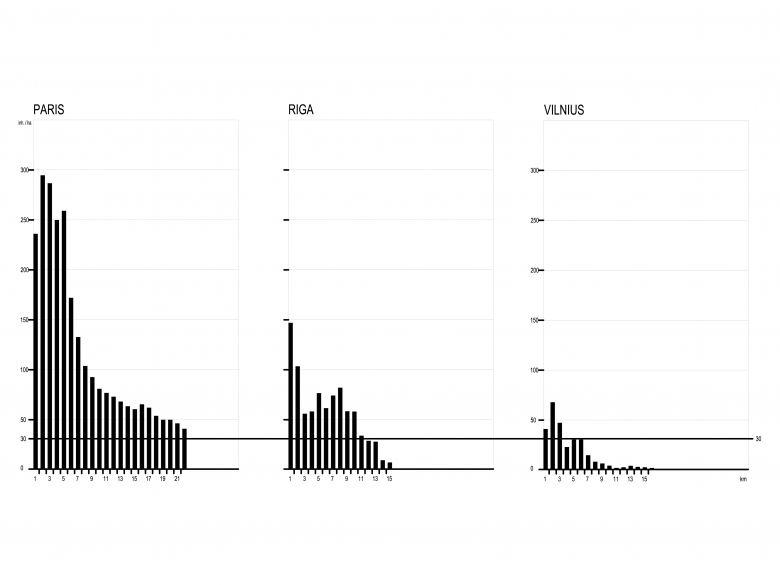
Cities rise during the process of human integration and community building; however, there have been periods when cities shrank and disappeared – in other words, they disintegrated. This is what, in my opinion, is currently happening in Lithuania, and not only in towns; the disintegration of the entire country is in question. The main problems involved in this challenge are population shrinkage, urban sprawl and the decline of urban planning. Urban development is usually understood as growth and development, but this definition is accompanied by a discussion on what the limits and possibilities of this growth are. In order to talk about urbanization in Lithuania and Europe we need to discuss how it began, what problems relate to it and what needs to be done today.

The first problem is demographics. The process of urbanization depends to a very large extent on the demographic situation. Since as early as 2000 it has been clear that population in Lithuania is going to drastically decrease. EUROSTAT predicted a population of two and a half million in 2050; this prediction, however, received no attention. No one took an interest in the topic until the last census in 2011, which suddenly revealed that Lithuanian residents no longer number three million. It is becoming increasingly obvious that we are going to reach the two-and-a-half million mark by 2030. The question is how do we develop the country under this negative trend of population shrinkage, which first of all means immense social challenges?

On the other hand, the change in population of different cities is very diverse. The population size in Vilnius is relatively stable, while Kaunas has experienced and continues to experience a drastic decline. It is possible that Klaipėda will eventually become the second biggest city in Lithuania, as it has more economic activity and less population decrease. This shows that economic development determines a city’s appeal. Vilnius siphons residents off the rest of Lithuania, attracting them from the regions. The population in all the municipalities has decreased by 10 to 15 percent in fifteen years, creating a great challenge – especially for small towns which are losing their vitality. Two ‘black regions’ have formed in the north-west and the south of Lithuania, which have 50 grandchildren to every 100 grandparents and are in need of a great effort to become appealing as a place of residence. However, even if population size – a necessary condition for the vitality and growth of a town – goes down, towns can develop by utilizing inner resources, that is, the potential to improve living conditions.
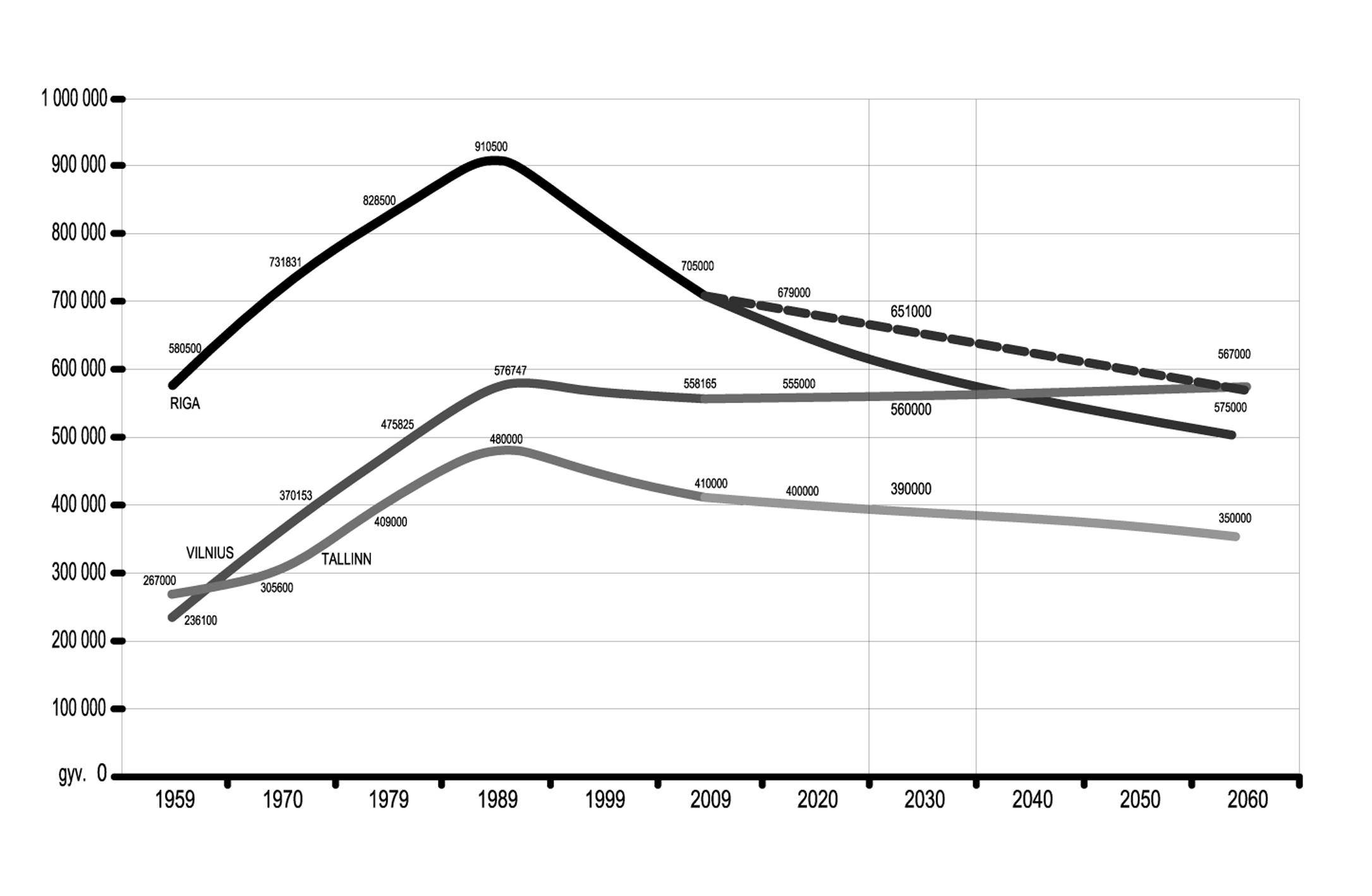
Another key problem is urban sprawl. Whilst population size falls, area increases and the price of infrastructure grows. It has been determined that the city as a structure stops being cost effective when the population density falls below 30 residents per hectare. In Vilnius, population is under this critical density as close as six or seven kilometres to the centre. While Soviet-era neighbourhoods and the historical city centre have a sufficient density of residents and workplaces, density in all suburban districts is only 2-5 residents/ha. Their inhabitants are obviously being supported by the rest of the population, which is socially unfair because the weaker social class that remain downtown is supporting the stronger one, which could afford to move out.

In terms of land use intensity, the city possesses a very large inner potential for development. The optimal density – the correct urban density rate – is 10,000-12,000 square metres of construction per hectare. This intensity of construction is only found in the historical centre of Vilnius, around Gediminas avenue or in the lower level of Naujamiestis. Meanwhile, in the upper Naujamiestis level, 500 metres removed from the historical centre, the density of construction is 0.4 – the same as it should be in Valakampiai. The existing infrastructure is thus underutilized while new residential districts are being constructed somewhere in the periphery, drawing development potential away from town.

Statistics from the last seven years show that close to half of the construction permits in Vilnius have been issued in territories outside the scope of Construction law, that is, collective gardening plots. In these areas, quality of life is virtually nonexistent, yet people still choose to settle, invest and build their lives in them. This raises a number of questions: could these young people live downtown and what should be done to keep them there? Could we create sufficient conditions inside the city to have them return, live and plan their future in it?

So population size goes down, cities sprawl, and what are we planning to do about it? The areas of Vilnius intended for development could easily house a million residents without being a hyper-dense city. Vienna, with an area of 400 square kilometres ‒ just as in Vilnius, has similar construction intensity – 26-27 percent of the city area. The only difference is that it has three times the number of residents, yet no one could claim Vienna lacks green spaces or is too dense. Examples such as this show that Vilnius has great potential which shouldn’t be spread out and squandered.
The European Environmental Protection Agency has recently released statistics showing that built-upon land area is growing much faster than population size, meaning infrastructure development is unable to keep up. Meanwhile in Lithuania, we have sprawling towns and infrastructure that are being developed with funding from Europe, while the population shrinks. A kind of ‘scissors effect’ is clearly forming, which makes it doubtful whether in several decades time the reduced population size will be able to support the infrastructure being created now.
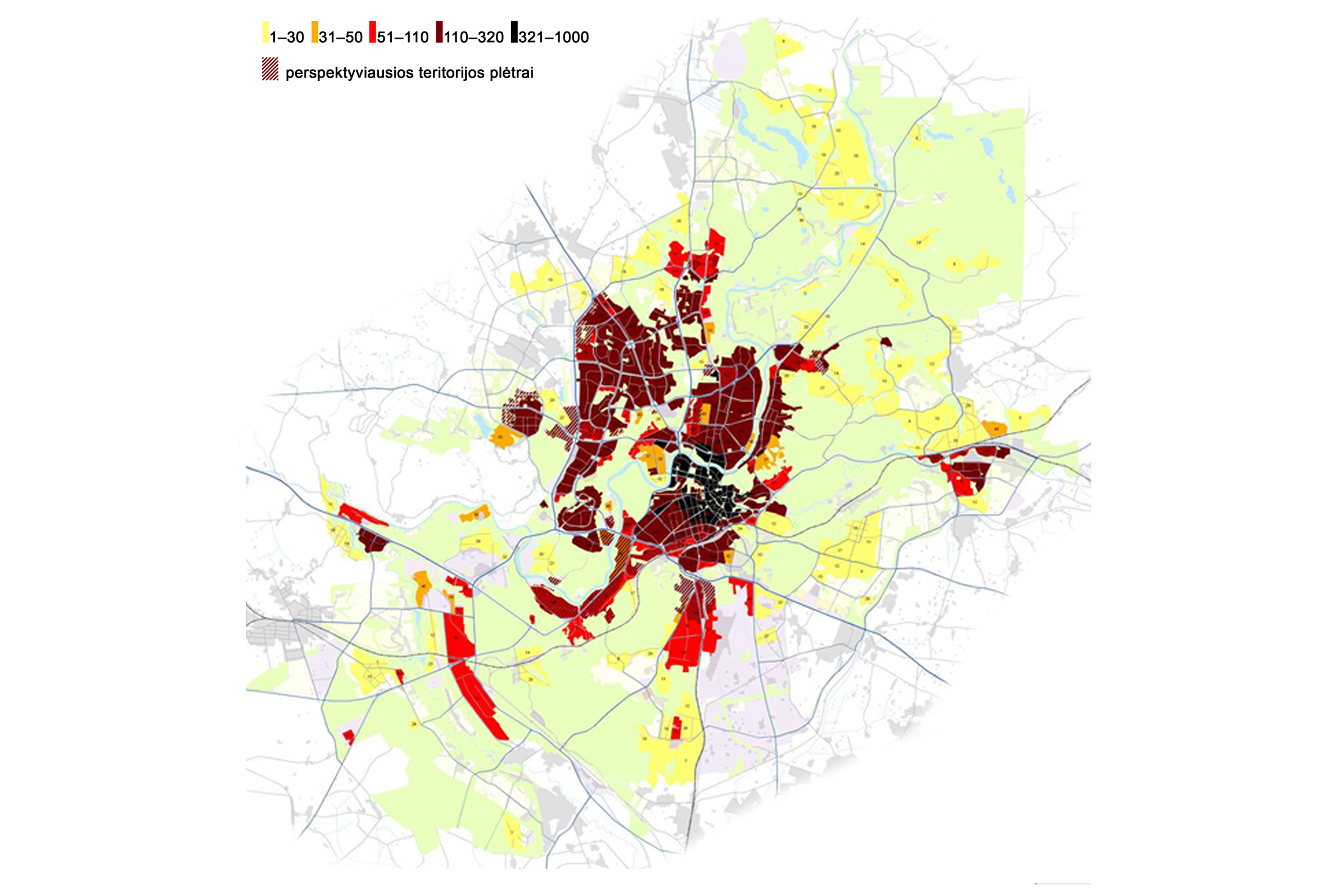
There has been much talk of changing the situation by legal means, such as the Law on Territorial Planning; however it must be understood that planning must not only be territorial, it must also be social and economic, whereas in our country these areas seem entirely unrelated. This is the main issue – drawing up plans while life takes its own separate course. On the other hand, in order to plan we need to know what we are planning, while right now we have neither a vision nor a strategy of developing the country as the population shrinks, or of taking action towards the dwindling small towns and figuring out their potential appeal to residents. Will investing in sidewalks bring the people back? It remains unlikely unless they have work...
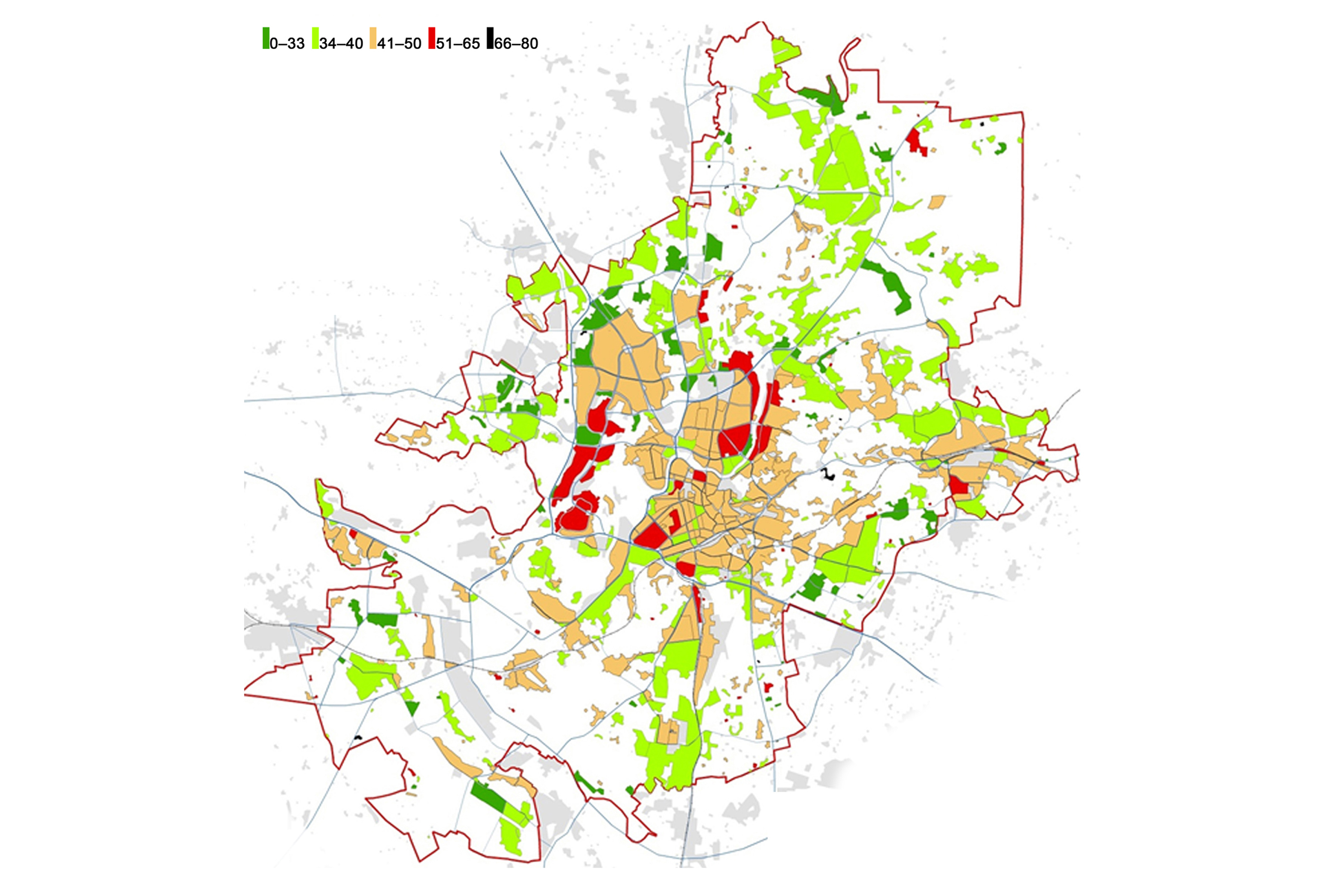
As planners, we can work under different visions, but we need a single agreed upon national vision for 20 to 30 years. We had hoped the strategy “Lithuania 2030” would provide some answers as to the country’s future, but regrettably this lacks a territorial dimension. There is no analysis of city development – will Lithuania remain a country of five cities with peripheral centres, or will everything be left to chance, leaving Vilnius strong, Klaipėda stabilizing and Kaunas, Šiauliai, Panevėžys in slow decline, without even speaking of the smaller towns? We do not have these answers, which remain essential to the discussion of a national vision. Moreover, every city also needs its vision. It is evident that towns with a vision are more successful, as shown by the examples of Vilnius and Druskininkai.
Investment happens on the ground and not in blueprints, and as long as we cannot consolidate the brown fields in the city, and as long as ownership is fragmented, investment will not happen, continuing instead to trickle out into the suburbs. We need legal mechanisms to consolidate property and land, such as those existing in the old democracies, and on this point we should not be as liberal than Sweden, Germany, Denmark or the Netherlands. No infrastructure means no investment. These matters are the responsibility of the municipality, only a living community with trust in its elected members of self-governance can have meaningful achievement. And then, when we have a vision, when we have a municipal government set to organize its implementation, which knows what it’s doing and plans for a 20-30 year period – only then can we believe investment projects will materialize.
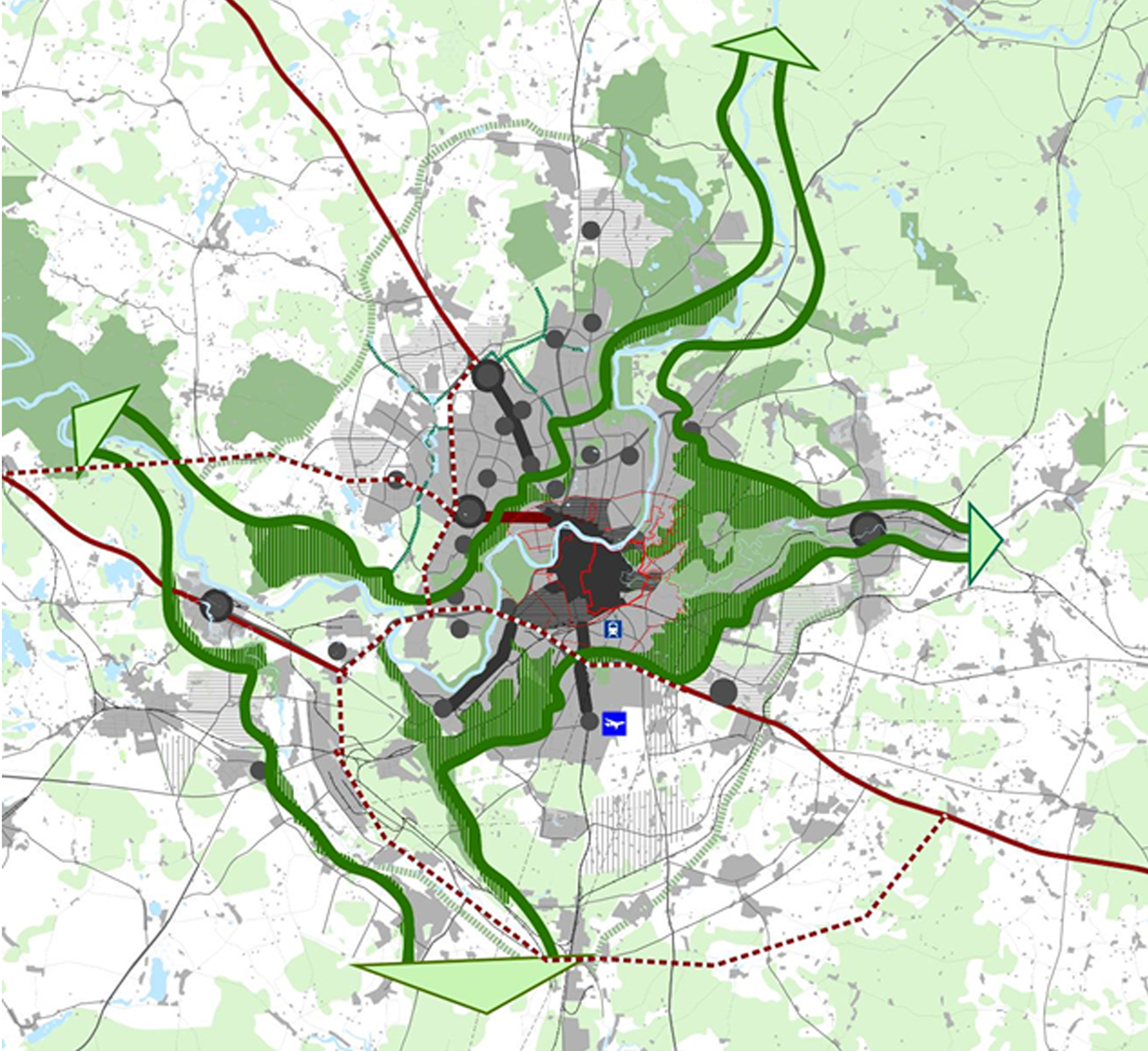
Is there anything that can be done? I am impressed by the example of Sweden and the Netherlands, where towns are developed in an integrated and compact way by planning districts, creating a quality of living where a person in an apartment receives the comfort of an individual home. For this, several basic principles are important. Creating lively spaces requires appropriate compactness and density. Giving priority to pedestrians enables inhabitants to make most journeys on foot or alternatively by using eco-friendly private or public transport. Transport planning should be linked to an overall view of the city and its development. Currently, the corridor method is in use, where a rapid transit route is created, urban construction is purposefully made dense around it and developers are attracted by exemptions or even subsidies in order to form effective rapid transit corridors. Then we can attach the infrastructure necessary for residents of the periphery. As recently as 5-6 years ago diverse area use – the mixing of various functions in town – which is a necessary condition for this type of urban planning, was virtually impossible according to the Law on Territorial Planning, which was based on 50-year-old dogmas according to which a person had to live in one place and work in another. These days production in the city does not usually produce pollution, instead creating additional value by way of mental work. This allows for a diverse city structure where many functions such as a person’s residence, workplace, and kindergarten are nearby. In receiving more services next to their place of residence, people no longer need to travel to the city centre every time. Mixed districts are alive all day, from morning to evening, leaving no need to migrate from residential areas to the workplace, which reduces traffic jams and pollution, and makes both residence and workplace more attractive.
Like in many other cities, an analysis of Vilnius breaks it down to three cities in one: that is, the central area or the historical centre, the middle city – districts of Soviet-era construction and the peripheral zone. Each of these areas is completely different and has its own problems; not only social or economic ones, but also a different urban view: the universally attractive historical centre, the peripheral zone where people live and create their own personal green paradise, and the middle zone of Soviet-era sleeping districts – abandoned, forgotten and controversial.
The main challenge in the central area is conversion – the renewal of previous industrial areas, the attracting of residents and the creation of new types of workplaces. We have good examples of this in Vilnius: Šiaurės miestelis, a new town centre on the right bank of Neris, the Business Triangle, and projects in Naujamiestis, proving that we are capable of implementing good projects. The centre of Vilnius has 500 ha of such territories, enough for ten years of inner urban development. If these are effectively used, they could contain about 20,000 living places and house around 50,000 residents. A peripheral zone could be similarly developed by creating peripheral service-aggregating nodes served by rapid transit routes. In this way we can create a system of peripheral nodes connected by rapid transit.
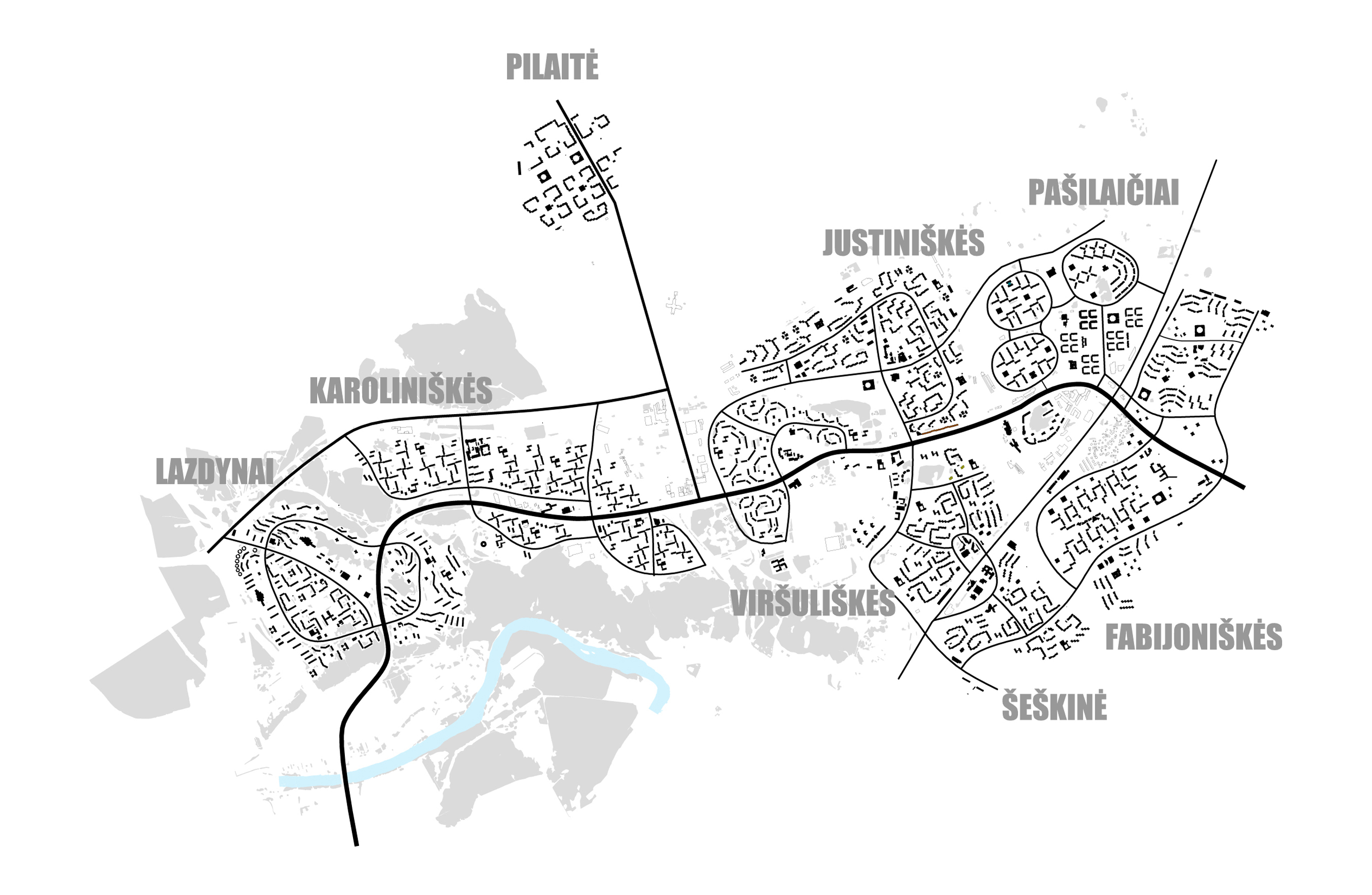
The greatest challenge is the middle zone – Soviet-era residential districts where creative renovation is required. It is obvious that heating insulation will not transform these neighbourhoods; what they need is a way to become appealing to younger people. And while we search for solutions, the neighbourhoods and their residents are getting older and young people are leaving, never to return since the districts no longer meet their needs. Fifteen years ago I saw a view in Halle-Neustadt in Germany, built just like Pilaitė in Vilnius – a satellite town of the eighties. The atmosphere is reminiscent of the surface of the moon: empty squares, abandoned as if after a catastrophe, identical block houses with broken windows, quiet and desolate save for graffiti and neo-Nazis, a hotbed of social tension and a terrifying apocalyptic view... No one wanted to rent the social housing there. Understandably, no one wants their children to grow up in such an environment. A tremendous amount of effort was required to revive this place – block houses demolished, reduced, and reconstructed to create more private spaces... The process was a long one, consequently if we do not act now, in 10-15 years time we will witness an identical sight in Lazdynai or Karoliniškės.
What should be done with the sleeping districts to avoid this? The only chance right now is to foster active communities. Perhaps the most successful example in Vilnius is the Balsiai community, where residents with a specific interest united as an organized structure and successfully demanded what they sorely needed – a public space, a bike lane and a pedestrian path, and an elementary school. Another example is the ‘Beepart’ cultural centre in Pilaitė. Initially, the municipality was sceptical about the initiative from young residents to create a community centre in a shipping container – but they eventually gave their support and the project was implemented. Now it is an active spot of communal activities, important to residents and guests, and a partner even to property developers who wish to publicize their projects and connect with the local community. Such participation from city inhabitants is our future and constitutes the only way to achieve anything, since the political-managerial goal of the municipalities is currently accumulating power in one position. Even the highest municipal officials have claimed that ‘communities are a hindrance to investment projects’. One of the signs of this accumulation is the plan to amalgamate elderships in Vilnius, which heralds an even greater divide between self-government and the community. In my opinion, the plan should be contrary, dispersing the hierarchy of self-governance and descending to the community level.
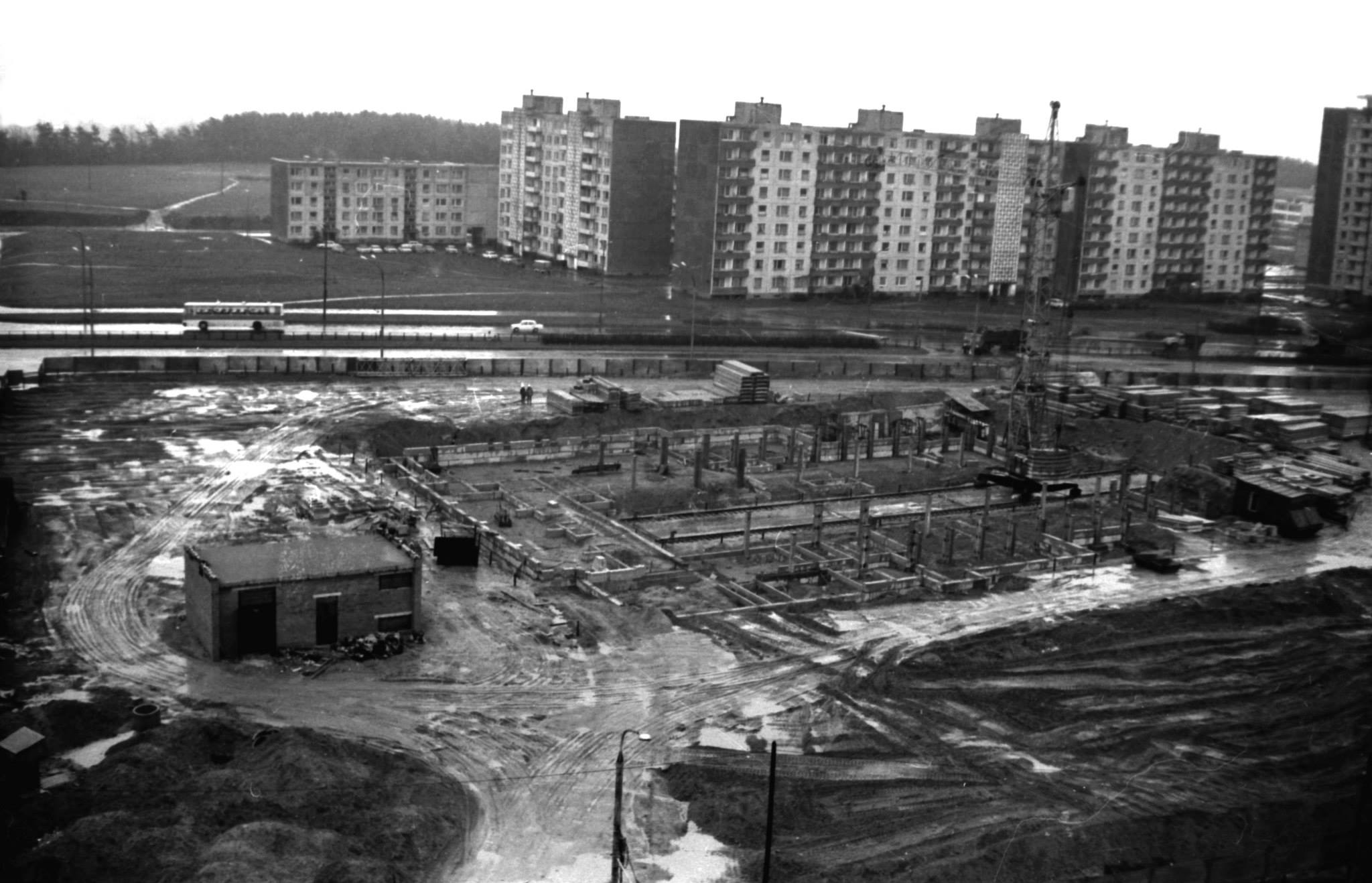
If, for example, a community of young residents intending to stay in Karoliniškės, assembled with a firm idea of what they need to change, received support and directly elected a leader, responsible for that particular territory without the requirement of re-election – the process of renovation would proceed much more smoothly and organically, in accordance to the needs of the residents. Right now there is a discussion regarding facade aesthetics and orderly public spaces, but they are not the only relevant subjects – instead safety, closed structures and private space are what attract people. In the current conditions, there is no future for a neighbourhood permeated by winds and random passersby. The structure of Soviet districts is not conducive to contemporary life – it is too large and well-managed only in a centralized way by treating humans as cogs in the machine. It does not encourage the people to associate and solve their problems themselves. This is the main issue of these districts. Only when the community is responsible for the future and development of its city, district, and block, can we hope for a positive change. It is my deeply-held belief that active communities are the only chance for the ‘sleeping post-Soviet city’.




